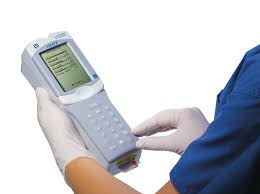
HIE case solved after lab value mismatch is discovered
In 2017 we received a call from a lawyer – Mr. McKinney - from another firm. Mr. McKinney had been investigating the case of Brandon Campbell for a little over a year. He knew our reputation for solving HIE cold cases and we had worked with him in other cases in the past. When he reached a major roadblock in Brandon’s case, he gave us a call.
Brandon was born in 2013. At birth, Brandon appeared severely asphyxiated – that is he appeared to have suffered a condition known as hypoxic-ischemic encephalopathy (“HIE”). HIE occurs when a baby does not receive enough oxygen and blood flow during the labor process causing brain damage and cerebral palsy. However, a key piece of evidence that is sometimes helpful in linking HIE to a medical error was missing. This turned out to be the case of the mismatched blood gases.
HIE, cord blood gases and metabolic acidosis
When a baby is born healthy, he or she is usually red, pink and/or crying. When a baby is born after a period of fetal distress that baby will appear limp, flaccid and pale. This is often a sign of HIE.
When a baby is born with HIE it is critical that the health care providers order what is called a “cord blood gas.” A cord blood gas is done when a nurse or a doctor takes blood, by using a needle and syringe, directly from the umbilical artery and umbilical vein immediately after birth. The blood is then sent to the lab and tested. In many instances, the lab will use what is called an i-Stat machine (pictured below) to interpret the blood gas results.

One of the main functions of a cord blood gas test is to determine the amount of acid in the blood. This is done primarily by looking at the “pH” levels and the “base excess” levels. It is widely accepted that in most cases a pH of less than 7.0 and/or a base excess of greater than -12 equates to what is known as metabolic acidosis. If there is severe metabolic acidosis in the cord blood that help a lawyer conclude that there was a lack of oxygen to the baby around the time of birth sufficient to cause brain damage.
The problem in Brandon’s case
According to the medical records, Brandon’s umbilical cord samples were promptly drawn and sent to the lab after his birth. However, the umbilical cord results showed no acidosis whatsoever. The pH was 7.31 and the base excess was -2. These are completely appropriate and normal levels and seemed to indicate that Brandon was not asphyxiated at or near the time of birth, despite all the evidence to the contrary.
Mr. McKinney had the case reviewed by several experts who were uncomfortable supporting the case with the cord blood gases being such an outlier. A few experts agreed to support the case but urged Mr. McKinney solve the riddle of why the cord blood gases were normal when Brandon seemed asphyxiated at birth. Mr. McKinney did his best to solve the blood gas problem but could not find the answer. So, Mr. McKinney called WVFO.
WVFO lawyers request the internal i-Stat data
After doing a thorough review of the medical records, WVFO began questioning whether the blood gas analyzer that was used to test Brandon’s cord blood gases was calibrated correctly. We had learned from a prior case that all blood gas analyzers need to be appropriately calibrated, and that errors in calibration can cause major errors in the reporting of the true values. As such, we asked the Defendant Hospital in Chicago to produce the internal data and calibration data from the i-Stat machine used to test Brandon’s blood.
A pre-suit fight with the Hospital's lawyer
Initially, the lawyer for the Defendant Hospital refused to produce the data from the i-Stat analyzer. The lawyer claimed that such data was not “part” of Brandon’s medical record chart. Therefore, according to him, it could only be obtained by a subpoena or formal request during litigation. Well, this was before litigation and the blood gas issue was keeping us out of the Court at the time. This was a classic case of the Hospital playing pre-suit cat and mouse. With HIE and cerebral palsy cases, this is not uncommon.
WVFO was gearing up for a pre-suit Court battle, but then suddenly the Defendant Hospital conceded we were entitled to the i-Stat data. When the Defendant Hospital agreed to produce the data we were convinced that there was nothing earth shattering to be uncovered. When we got the lab results it was clear that there was not an issue with the device calibration. It was human error.
Brandon’s real results
Apparently, the day that Brandon was delivered was a very busy day at the hospital owned by the Defendant. Brandon and another baby had delivered within minutes of each other. Both children had difficulties at birth, so cord blood gas studies were requested for both babies. The nurse who labeled the containers of blood had accidentally switched the vials of blood for Brandon and the other child. The results in the record were wrong, and belonged to the other child who had been delivered within minutes of Brandon.
It turns out that Brandon was severely acidotic at birth. His pH was 6.73 and his base excess was -24. These results were consistent with severe intrapartum asphyxia and HIE. With the accurate lab results now part of the record the case was ready to be sent to a new team of medical experts.
Experts agree HIE caused Brandon's cerebral palsy
WVFO had the records reviewed by several maternal-fetal medicine specialists and a well-respected and well-known neonatologist. The records were unanimous that Brandon had suffered preventable intrapartum asphyxia and HIE because the obstetricians caring for Brandon’s mother during labor and delivery had waiting too long to perform a cesarean section delivery.
The experts who reviewed the case for WVFO agreed that the blood gas results were so inconsistent with Brandon’s birth presentation that they may have caused significant trouble during the litigation if WVFO had not uncovered the true results.
This case was litigated for several years but eventually settled for a confidential amount. The settlement money was put into a Special Needs Trust for Brandon. This money allowed Brandon and his parents to be able to care for Brandon for the rest of his life with a quality of care that ensured Brandon was his happiest and healthiest self.
CASE CLOSED.
